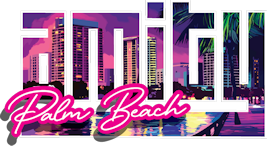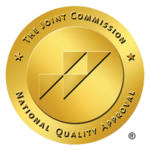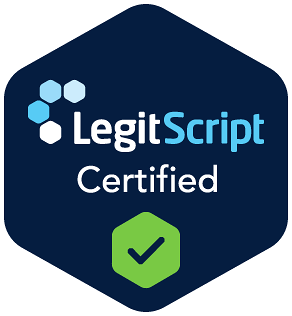Finding the right support system is essential for successful addiction recovery. Drug addiction recovery groups provide peer support, accountability, and proven strategies that help people maintain long-term sobriety.
We at Amity Palm Beach understand that choosing the right group can feel overwhelming when you’re starting your recovery journey. This guide will help you locate and connect with recovery groups that match your specific needs and preferences.
Which Recovery Group Type Matches Your Needs
12-Step Programs: Structure and Spiritual Foundation
Twelve-step programs like Narcotics Anonymous and Alcoholics Anonymous follow a spiritual framework where participants surrender to a higher power and work through structured steps. These programs report the highest attendance rates, with widespread availability ensuring 2–3 meetings within a 15-minute drive in any US city. The meetings follow a predictable format with sponsors, literature readings, and sharing circles that many find comforting during early recovery.
SMART Recovery: Evidence-Based Self-Empowerment
SMART Recovery takes a completely different approach and uses cognitive-behavioral techniques with self-empowerment tools. This evidence-based program focuses on motivation, coping skills, rational thinking, and balanced life without requiring belief in a higher power. Research from the Recovery Research Institute shows that 29.3 million adults have resolved substance use issues, suggesting that self-directed approaches like SMART can be highly effective.
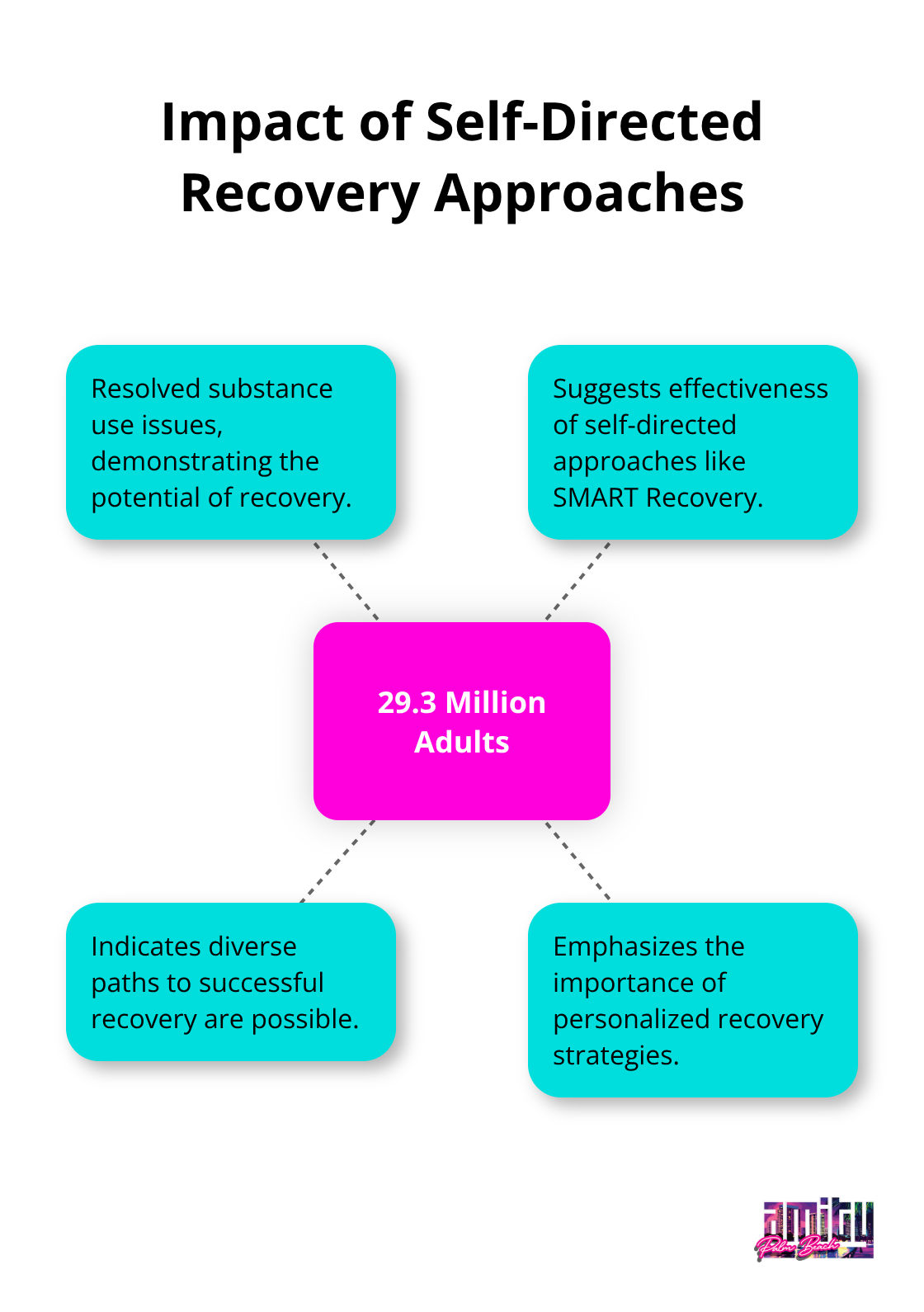
Faith-Based Groups: Spiritual Guidance and Community
Faith-based groups integrate religious beliefs and practices into recovery, often meeting in churches or religious centers. These groups appeal to people who want spiritual guidance alongside peer support. Veterans, healthcare workers, and specific demographic groups often prefer specialized meetings within these broader categories.
Finding Your Perfect Match
The key lies in matching the group’s philosophy with your personal beliefs and recovery goals rather than settling for whatever happens to be nearby. Each approach offers distinct advantages that work better for different personality types and recovery stages. Once you identify which philosophy resonates with you, the next step involves locating these groups in your specific area.
Where Can You Find Recovery Groups Near You
Most recovery groups exist in plain sight, and knowing exactly where to look saves weeks of frustration. The SAMHSA National Helpline at 1-800-662-4357 operates 24/7 and connects callers to local resources within minutes, but online directories provide faster self-service options. The Narcotics Anonymous World Services website maintains the most comprehensive meeting locator with real-time updates, while SMART Recovery’s online tool filters by format, day, and time preferences. Alcoholics Anonymous offers both national and local chapter websites with detailed meeting schedules.
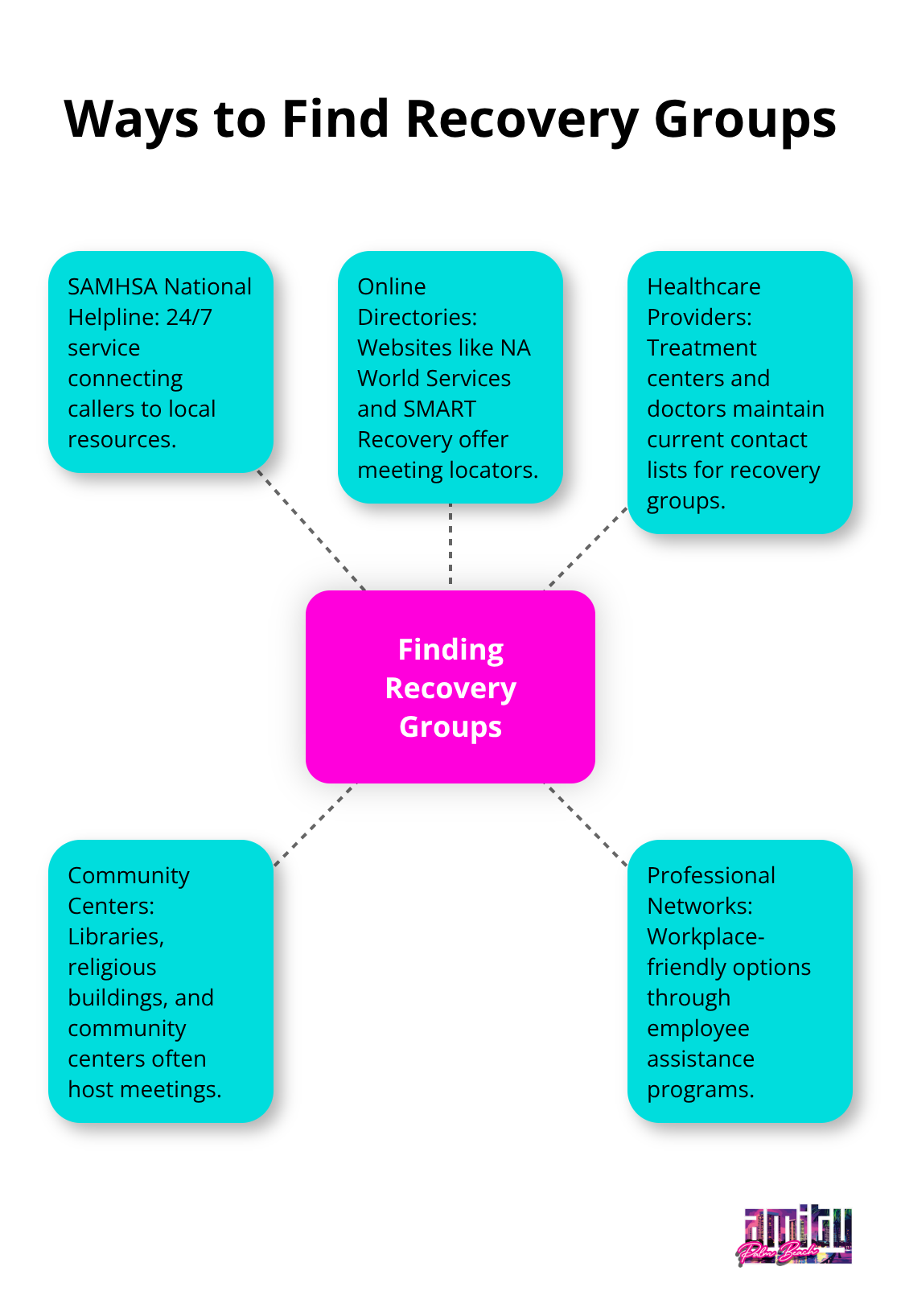
Healthcare Providers Know Local Networks Best
Treatment centers maintain current contact lists for every recovery group type in their service areas because they regularly refer discharged patients. Call three addiction treatment facilities near you and ask for their resource coordinator – they track which groups have active attendance and effective leadership. Primary care doctors, therapists, and hospital social workers also keep referral lists (though these may be less current than treatment center resources).
Community Centers House Most Meetings
Libraries, community centers, and religious buildings host most recovery meetings, but these aren’t always advertised publicly. Visit community bulletin boards at libraries, health departments, and grocery stores where groups post flyers with contact information. Call churches, synagogues, and mosques directly – their administrative staff knows which recovery groups meet in their buildings even if the congregation doesn’t formally sponsor them.
Professional Networks Offer Discrete Options
Hospital outpatient departments and employee assistance program coordinators maintain updated lists of workplace-friendly meeting times for professionals who seek discrete support options. Many corporations partner with local recovery organizations to provide on-site or nearby meetings during lunch hours or after work (particularly in business districts with high professional populations).
Once you locate potential groups in your area, the next step involves understanding what actually happens during these meetings and how to prepare for your first experience.
What Happens at Your First Meeting
You arrive 10-15 minutes early for your first recovery group meeting, sign in with your first name only, and receive literature or meeting schedules from a greeter. Most meetings follow a predictable 60-90 minute structure: opening statement, moment of silence, literature reading, main discussion period, and closing circle. Twelve-step meetings use the Serenity Prayer and step readings, while SMART Recovery sessions begin with check-ins and agenda setting.
Meeting Structure and First-Time Participation
The facilitator usually asks newcomers to introduce themselves by first name only – participation stays completely voluntary, and you can simply say “pass” if you prefer to listen. Group leaders establish clear boundaries from the start: no cross-talk during shares, maintain confidentiality, avoid direct advice, and respect time limits for individual contributions. Most groups allocate 2-3 minutes per person for sharing, with topics that range from daily challenges to milestone celebrations.
Discussion Topics and Group Focus
SMART Recovery meetings focus on problem-solving and skill-building exercises, while twelve-step groups emphasize personal experience and spiritual growth. Groups typically discuss triggers, coping strategies, relationship challenges, work stress, and family dynamics. Expect honest conversations about real-life recovery obstacles rather than theoretical discussions about addiction science. Phone numbers get exchanged freely after meetings, but romantic relationships between members face strong discouragement during the first year of recovery.
Building Your Support Network
Regular attendees often grab coffee together before or after meetings, creating informal support networks that extend beyond scheduled sessions. Most groups suggest you attend the same meeting for 6-8 weeks to properly evaluate fit, since group chemistry varies significantly between different days and locations (even within the same organization). Building mentor relationships typically develops after consistent attendance, allowing time to observe potential mentors and their recovery approaches. Groups maintain detailed phone lists and often organize sober social activities like dinners, hiking trips, or holiday celebrations that help members build friendships outside the meeting room environment. Remember that relapse support remains available if you experience setbacks during your recovery journey.
Final Thoughts
Drug addiction recovery groups provide measurable benefits that extend far beyond weekly meetings. Research shows that 88.4% of people in recovery rate their quality of life as good or excellent, while 71.1% report financial stability. These statistics reflect the real-world impact of consistent group participation on long-term sobriety outcomes.
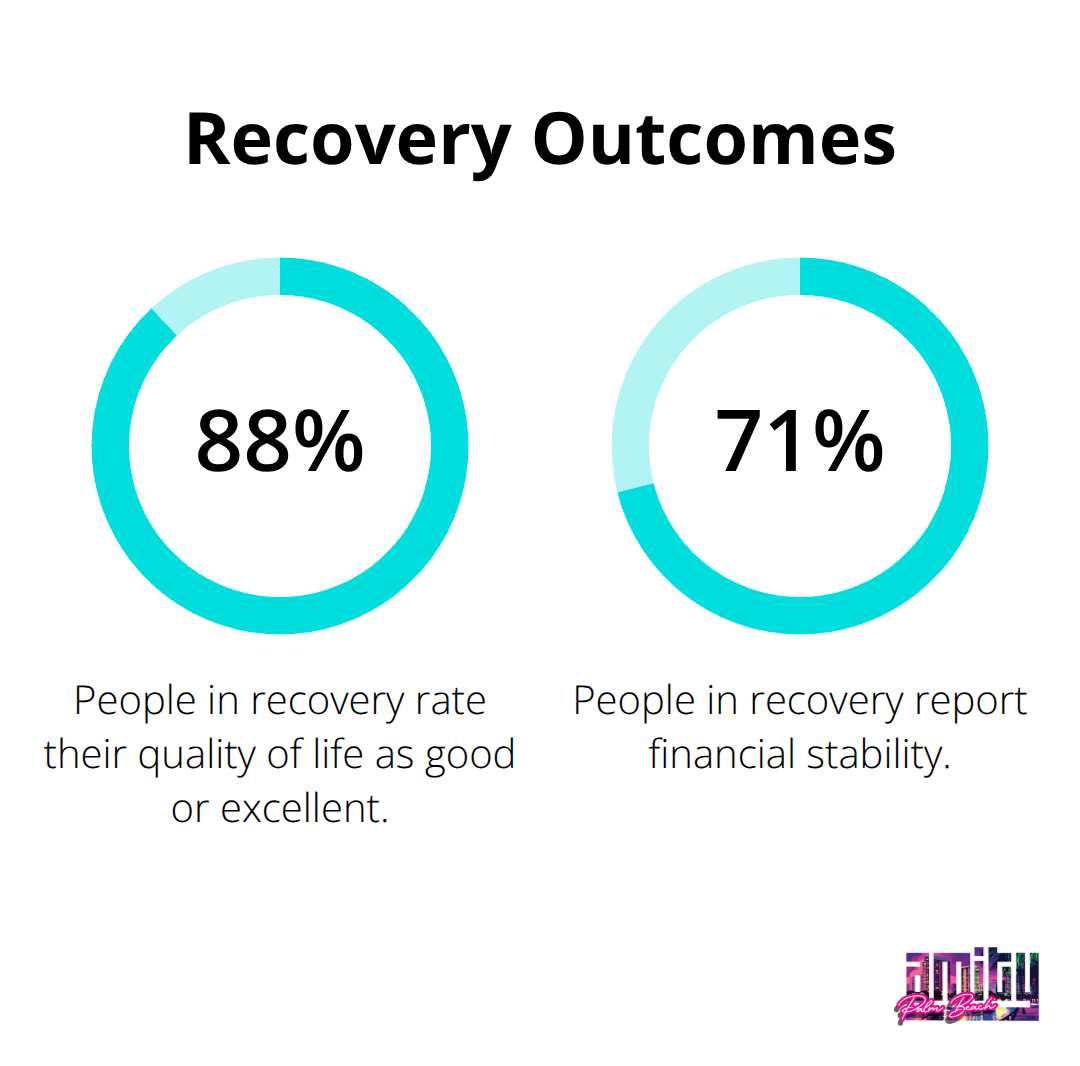
The right group match matters more than convenience or location. SMART Recovery works best for people who prefer evidence-based approaches, while twelve-step programs suit those comfortable with spiritual frameworks. Faith-based groups serve individuals who seek religious integration in their recovery process (particularly those with strong spiritual backgrounds).
Your recovery journey starts with a single phone call or online search. Visit the SAMHSA website, contact local treatment centers, or check community bulletin boards to locate meetings this week. We at Amity Palm Beach offer comprehensive addiction treatment that connects clients with appropriate drug addiction recovery groups during and after formal treatment.
